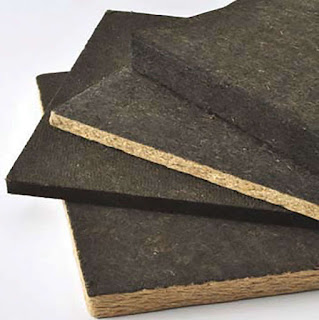Celotex Fiberboard : a Comparison Between Rigid Foam and Fiberboard Insulation
Celotex fiberboard is one of the most popular materials for insulation in the class of fiberboard. On the other hand, there is the rigid foam as its competitor. Basically, both materials are used for residential. However, each material has its own specialty. For example, rigid foam is mostly used for basement wall insulation due to its ability to resist moisture. On the other hand, fiberboard is popular of the attic ceiling insulation and the stud cavity insulation. Here, we will compare both materials along with the pros and cons.
The uses
Rigid foam insulation
Basically, the rigid foam can be cut into any shape you need for the insulation panel. Typically, it will be used for the exterior continuous insulation, basement, rim joists, and soundproofing for the interior area. Rigid foam is basically much better dealing with the moisture compared to fiberboard.
Fiberboard insulation
Just like the Celotex fiberboard sheathing, it fills the cavity of the exterior walls but is not designed for the basement. In order to prevent the heat loss, fiberboard is widely used in the attic as the blanket or between the joists. This material is also used for the rim joists between the foundations. Other use of Celotex fiberboard includes around the door or window frames and space where wires and pipes get through the exterior walls.
The cost
In fact, fiberboard insulation costs less than the half price of insulation from rigid foam if you calculate it using the R-value per square foot. For example, installing the insulation for a10- square foot wall space required around USD 4 if you choose Celotex fiberboard home depot. Meanwhile, it costs around USD 10 if you use rigid foam for the insulation for the same area.
When you cut the material to the size, rigid foam shows small pieces with thin sections in it. Virtually, those are not usable at all. On the other hand, Celotex fiberboard asbestos can be torn apart and put into the small areas together. You will waste a very little amount of it in the end.
Read too : Blow-in Insulation Cost
The ease of installation
In this section, you will read several pros and cons. Foam offers the clean yet irritant-free products. Meanwhile, fiberboard provides the flexibility so it can mold around any obstruction.
Rigid foam
As we have mentioned earlier, rigid foam is easy to cut so the size can be adjusted just by a utility knife or a fine saw. The foam will not give you the urge to protect yourself just like what you should do when you work with fiber. However, the rigidity does not accommodate any obstruction you may find in the wall such as wire, junction boxes, and so on. You must cut it to fit. You may need the expandable foam to fill in the thin gap between the foam and the frame.
Fiberboard
This material is very flexible and fit to any obstruction. However, it causes irritation to your skin, eyes, and the worst is your lungs due to the fiber material. Still, Celotex fiberboard is one of the best materials for insulation on the market.

0 Response to "Celotex Fiberboard : a Comparison Between Rigid Foam and Fiberboard Insulation"
Post a Comment